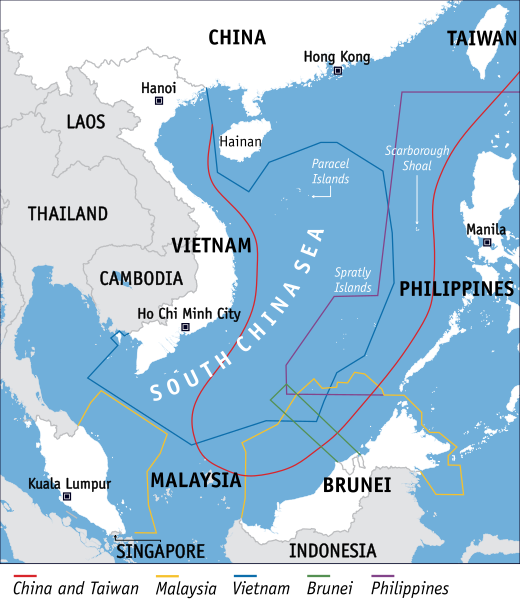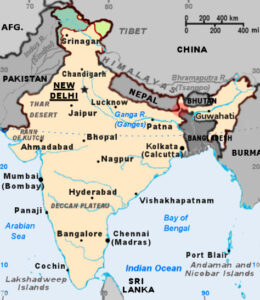- From the 19th century to the current geopolitical challenges, the American military presence in the Philippines is relevant;
- The territorial dispute in the South China Sea and the rivalry between the United States and China shape the American military presence and regional alliances;
- The return of US troops to the Philippines impacts regional security and counterbalances Chinese influence.
The return of the US military presence in the Philippines marks a milestone in relations between the two countries, with significant repercussions for regional security and rivalry with China.
The new military bases seek to contain Chinese influence in the South China Sea and establish a balance of power in the region. However, it is essential to address concerns related to sovereignty and ensure transparent and mutually beneficial cooperation.

The History of US Military Presence in the Philippines
The American military presence in the Philippines dates back to the late 19th century, when the United States took control of the country after the Spanish–American War in 1898. During the war, the United States defeated Spanish forces and the Treaty of Paris, signed in 1898, transferred sovereignty from the Philippines to the United States.
After acquiring the Philippines, the United States established a colonial administration in the country, which lasted until Philippine independence in 1946.
During this period, the United States established military bases on the archipelago to protect its interests in the region. The most important bases were Clark Air Force Base, located near the city of Angeles, and Subic Bay Naval Base, located near the city of Olongapo.
These military bases played a strategic role during World War II, serving as footholds for US forces’ operations in the Pacific region. However, after Philippine independence, there was a growing movement to end the American military presence in the country.
In 1991, the Philippine government decided not to renew the agreement that allowed the presence of American military bases, and the Clark and Subic Bay bases were closed.
Despite base closures, the United States and the Philippines maintained close military relations. In 1999, the two countries signed the Forces Visit Agreement, allowing US troops to conduct joint exercises and training with the Philippine Armed Forces.
The agreement also laid the groundwork for cooperation on security issues such as combating terrorism and responding to natural disasters.
In recent years, the US military presence in the Philippines has been the subject of discussions and negotiations between the two countries. Issues such as freedom of navigation in the South China Sea and China’s growing assertiveness in the region have led to increased military cooperation between the United States and the Philippines.
The Philippines giving Americans access to 4 military bases
After a history of colonialism shared with the United States, the Philippines is inviting it to increase its military presence in the country, granting access to four new military bases amid rising tensions with China.
By allowing the US military presence, the Philippines seeks to strengthen its defense and security capabilities in the face of China’s territorial claims in the region. This strategic partnership aims to ensure the protection of its sovereign interests, as well as promote freedom of navigation in the South China Sea, amidst geopolitical tensions and potential conflict escalation in the region.
Kenneth Faulve-Montojo, an expert on Philippine politics, stresses the need for US assistance, saying the Philippines cannot stand up to China alone. The “Enhanced Defense Cooperation Agreement” will allow the US access to these additional bases, strengthening its military presence, which already included strategic locations.
The US Department of Defense emphasizes that this increased access to bases will strengthen the alliance and accelerate the modernization of joint military capabilities. In addition, the US presence will enable more responsive support in humanitarian and climate-related disasters, as well as drive economic growth through foreign investment and job creation.

While many Filipinos see the US presence as a strategy to counter and deter Chinese influence and incursions, some may have concerns about the social implications of granting the US so much military power on their soil.
While the specific locations of the new military bases have not been publicly disclosed, previous discussions have indicated possible sites in Cagayan Province, across the Taiwan Strait, as well as Palawan and Zambales.
This expansion reflects the importance of close cooperation between the United States and the Philippines to address regional challenges and maintain stability in the Indo-Pacific.
The importance of the Philippines in the geopolitical dispute between the US and China
The “First Island Chain” and the “Second Island Chain” – respectively, First Island Chain and Second Island Chain in English – are geopolitical concepts that refer to two lines of islands and islets in the Pacific Ocean, which are considered to be of strategic importance in a potential dispute between China and the US.
The First Chain of Islands is a series of islands stretching from the Korean peninsula, through the Japanese islands, Taiwan and all the way to the Philippines. It forms a kind of natural barrier that delimits the East China Sea and the South China Sea, separating mainland China from these maritime areas.

The Second Chain of Islands, in turn, is farthest from the Chinese coast and extends from the Mariana Islands, through the Carolinas, to the Marshall Islands. It is also part of the Western Pacific region and has strategic relevance.
These island chains have significant geopolitical implications, as they play a role in controlling maritime access, defense, and influence in the region. They are considered important to the United States and its allies as a way to guarantee freedom of navigation and contain the expansion of Chinese influence in adjacent waters.
Looking closely at the growing tensions between Taiwan and China raises the possibility of US intervention in the event of a Chinese attack on Taiwan. In this scenario, it is plausible that the United States will take action, possibly starting from its military bases located in the Philippines, which underscores its geopolitical importance.
The territorial dispute between China and the countries in the South China Sea as a justification for the American presence
The territorial dispute in the South China Sea is one of the main reasons that justify the American presence in the region. The Sea is an area rich in natural resources such as oil and gas, in addition to being an important maritime route for international trade, with a large part of world trade passing through its waters.
Several countries, including China, Taiwan, Philippines, Vietnam, Malaysia and Brunei, claim parts of the South China Sea and the islands and reefs located in it. Beijing, in particular, claims a large part of the area based on what is known as the “nine dashes line” or “U-shaped line”, which encompasses most of the sea and several disputed islands and reefs.
The American presence in the region is justified by the interest in maintaining stability, freedom of navigation and maritime security in the area. The United States supports neighboring countries in the South China Sea that have territorial disputes with Beijing and opposes unilateral Chinese actions that could destabilize the region.
The United States has conducted sea and air patrols, as well as joint military exercises with regional allies such as the Philippines, Japan and Australia, as a way to show support and deter provocative actions.
The US military presence in the Philippines and other countries near the South China Sea is seen as a way to ensure a balance of power in the region and show a united front against Beijing’s excessive claims.
The US presence is also driven by concerns that increased Chinese influence in the area could threaten US strategic interests in the Western Pacific.
In addition, the United States seeks to protect its own economic and commercial interests in the region, as freedom of navigation in the South China Sea is vital to global trade.
Other US military bases and alliances to contain China
In addition to the presence in the Philippines, the United States maintains other bases and partnerships in the region, including Australia, Quad and AUKUS:
- Australia has a long history of military cooperation with the United States. The two countries hold joint military exercises, share intelligence and maintain a strategic partnership to ensure stability and security in the region. The Darwin base in northern Australia maintains a rotating force of US Marines, and has been used for training purposes and joint exercises between the military forces of the two countries.
- Japan is home to several US military bases, most notably the island of Okinawa. The military presence in this region plays a crucial role in the defense of regional stability and security, in addition to serving as a strategic point for the projection of US power in the Pacific region.
- Korea, which has strong relations with the US, especially given tensions on the Korean peninsula. The alliance between the two countries aims at mutual defense and stability in the region, with the aim of containing threats from North Korea and ensuring peace on the peninsula.
- Guam, a US territory in the Pacific Ocean, is home to a major US military base. A presence on this strategically located island allows the US to project power and extend its influence in the Pacific region.
- The Quad, also known as the Quadrilateral Security Dialogue, is made up of the United States, Australia, India, and Japan. It is a diplomatic and security initiative that seeks to promote a free and open order in the Indo-Pacific and strengthen cooperation in areas such as maritime security, connectivity and disaster response.
- AUKUS (Australia, United Kingdom and United States), announced in 2021, aims to strengthen cooperation in defense and security, with a focus on the development of undersea nuclear technology for the Australian Navy. This initiative is seen with Part of efforts to strengthen the presence and influence of the United States and its allies in the region.
The concept of “Force Design 2030” is also part of the US strategy to face the challenges presented by China. Force Design 2030 involves restructuring and modernizing the US Marine Corps (one of the 6 branches of the US), with an increased focus on maritime capabilities, including the development of advanced weapons systems and innovative technologies.
Such initiatives aim to strengthen the United States’ deterrent posture and response capacity in a scenario of strategic competition with China.
How important is the return of US troops to the Philippines to China?
The establishment of a new US military base in the Philippines marks a milestone in bilateral relations between the two countries, with far-reaching implications for regional security and defense cooperation.
The US military presence in the Philippines will further contain Beijing’s influence in the South China Sea and help to prevent conflict and Chinese aggression in the region.
In addition, the United States will provoke a balance of power, preventing China’s total dominance in the region. As a global power, Washington will offer a robust military presence that counterbalances China’s growing influence, providing an alternative to countries worried about their expansionist ambitions.
However, the American presence in the region demonstrates Washington’s constant ambition to maintain its hegemony in the international system, raising questions about the militarization of the region and the possibility of increasing its tensions with China.
In addition, military presence should not be the only solution, and diplomatic efforts should be prioritized to prevent the escalation of conflicts and promote an environment of peace and mutual cooperation, seeking to resolve their differences, in order to promote stability and sustainable development. in the Asia-Pacific region.
While the presence of a new US military base in the Philippines offers advantages, it is crucial to address sovereignty concerns and domestic implications. The Philippine government must ensure that its sovereignty remains intact and that the terms of the agreement are transparent and mutually beneficial.






日軍第731部隊旧址_PB121201-e1713902593308-300x224.jpg)










Be First to Comment